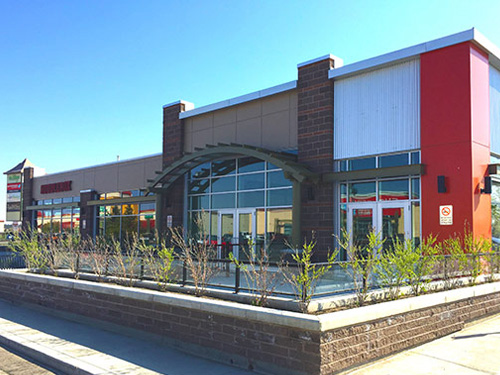PERIMETER BLOG
LATEST NEWS & INTERESTING FACTSThere’s a tiny mall located in the central Albertan town of Red Deer that, despite it’s small stature, is difficult to miss. For starters, Red Deer is a through city – people embarking up and down Highway 2 between Calgary and Edmonton have passed through the town hundreds of times, stopping for gas and snacks along the way.
That means there’s a lot of eyes glued to the buildings along Red Deer’s main strip, the famous Gasoline Alley.
Get it? Because you probably need gas?
Anyways, it’s these busy thoroughfares that can do the most to contribute to the growing wave of sustainable building practices in Canada. The retail sector exists just a little outside our industrial comfort zone, but it’s an area with a lot of promise when it comes to leading the sustainable building charge.
Red Deer Village Mall
“Located in an area of mixed retail, commercial and residential land uses, this project was remediated to remove contaminants in the soil resulting from the site’s former use as a retail gas service station.”
That’s straight from the Canadian Green Building Council’s website. The Red Deer Village Mall is a sustainable building beacon built over the site’s previously toxic tenant. Not only has the structure replaced a detrimental site, it took advantage of sustainable building practices to improve insulation and save energy costs, reduce lighting power required, and “exhaust air energy recovery on various mechanical systems.”
So why is the retail sector so important to the future of sustainable development?
Visibility
Shoppers. Traffic. Eyeballs. Like we talked about a few weeks ago, people inside environmentally-friendly buildings tend to revert to eco-friendly behaviour without being aware of it. It takes leadership to ditch the rushed, energy-squandering practices of the past six or seven decades, and projects such as the Red Deer Village Mall are at the forefront of the cause.
Not only are the walls built to last, but the project’s tenants are committed to upholding the spirit of the agreement. “Mandatory lease agreements specified that tenants install low-flow toilets and faucets in the building,” says the mall’s case study. This means that the annual use of potable water is decreased by 48%.
More water saved, more energy, more clean air – all of these savings add up to a gigantic windfall for more than just the people walking through the mall or workers manning the cash register.
Those savings are passed on to other sectors as well.
Big Savings: Cost, Materials, Future Modifications
The savings generated by retail and commercial projects such as the mall mean there’s more to go around now and in the future. Locally sourced materials were a focus of the project, meaning the local manufacturing sector received a boost during construction. Shipping materials like water, minerals, and construction materials costs a lot in terms of time, money, and energy, so using local contractors and construction workers is a win win.
Which brings us closer to home: the industrial industry. We’ve been harping about clean construction sites for a few months now, so if we can help keep the job site clean while the retail sector erects beautiful new sustainable buildings that attract money and attention, then we’re definitely on board with that.

